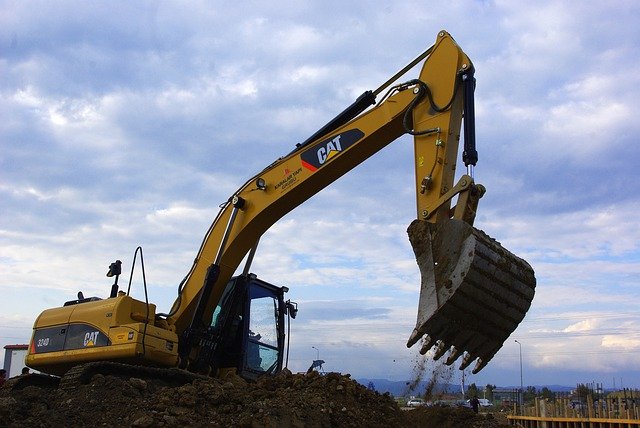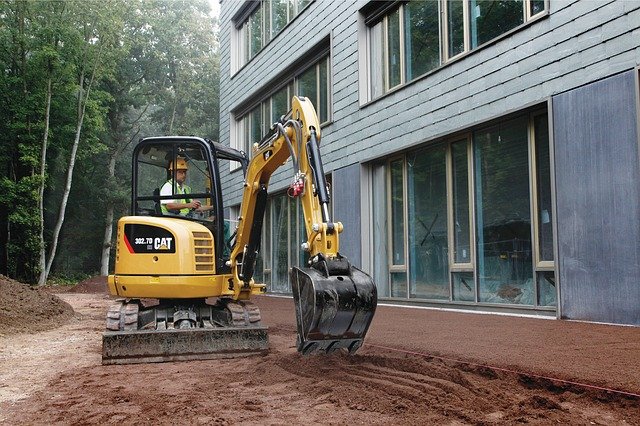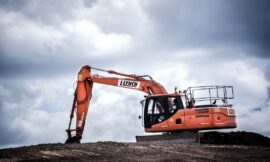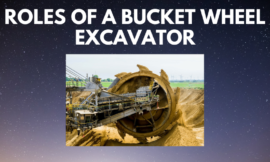What is Excavator’s Operating Weight ?
Excavator :
These are earth moving machines or vehicles that are easily identified by their components or parts. These parts of an excavator are included in the operating weight of an excavator.
Definition Of Excavators Operating Weight
Excavators operating weight is mostly confused with the equipment’s weight whereas it is the total or basic weight of the machine including the tools attachments, operator, full tank fuel, lubricating systems and hydraulic systems.
When you read this article further you will know of the maximum operating weight and everything you need to know.

What are the Parts That Are Included In Excavators Operating Weight?
Different models from different manufacturing companies have individual parts that are not common to all of them depending on the type and size of the machine.
However, they contain the basic components that they all have. By looking at each section we understand how they interact and work as a whole and no part is important than the other.
An excavator is basically a system whose components contribute to the machines overall operation.
These components /types are :
The Undercarriage
This is the lowest section that helps or enables to move the excavator around the working area for it has many interconnecting pieces that cooperate. It is a stabilization and propulsion unit of an excavator. It contains mechanisms that drive the machine forward backwards and sideways.
It consists of:
Tracks or wheels
It may be assumed that all excavators are of tracks whereas there is wheeled excavators. They enable the excavators to move from place to place.
Track excavators have :
- Slew ring, swing gear and swing bearing. This connects the excavators house to the undercarriage. It’s the turntable region that helps the house revolve on the track assembly.
- Sprockets and idlers. Sprockets are two gears that interconnect with the track links while idlers play a critical alignment role. Tracks are amplified links that turn within a sprocket and idler assembly.
- Track pads and drives. Excavator drives turn the sprockets and give motion to the track assembly.

Final drives
This consists of hydraulic motors and gearing systems connected by a drive shaft to the engine. It provides power to the tracks for left and right turning.
Blade
This is not mostly included on all models it works as an attachment to clear loose materials on the ground.
The House
This contains the power source where fuel energy gets converted to excavating force and operators’ controls. It sits on a turntable joining the cab and engine to the undercarriage.
It also connects to excavating arm making it the central command and control center.
It has the following :
Operator cab
This is where the operator seats and operates from, it also contains the controls of the excavator.
Counter weight
This is incorporated into all designs when a digging arm is fully extended and its likely to tip an excavator. It helps in lifting the load faster and more efficient and this saves the energy used.
Engine
This is where the whole machine derives its power from, it uses diesel as fuel as it provides higher horsepower than petrol. It also powers the hydraulic pumps, two of which supply pressurized oil to the arm, accessories and swing motor. The main difference is the capacity and size of the parts.
Operating flow of hydraulic systems depends on the size of the excavator a higher total flow means a higher-pressure system and a greater capacity to do more work.
Huge excavators depend on hydraulic systems that allow these machines to lift hundreds or even thousands of pounds of materials at a time.
Excavators total weight should adequately anchor it against the strains of the lift and thus should match the weight of the lift requirements because the more the operating weight, the more the ability to lift heavy loads.

Fuels and hydraulic fluids tanks
This are located close to the engine to allow easy access for refueling.
Main control valves
An excavator’s main hydraulic pump has a central control valve that regulates the volume of hydraulic fluid circulating in the system.
The pump and controls also regulate the pressure eld in the main and auxiliary hydraulic lines.
The Arm
This part is responsible in performing most actual physical work, it projects from the main body of the excavator. The arm component can raise and lover, open and close and extend and retreat

It has :
Boom
It is the largest part of the arm. They are of different sizes and lengths depending on the task to be completed and the type of the excavator.
They are the upper arm portion mounted to the house, controlled and powered by hydraulic boom cylinder which is part of machines primary pressurized system.
Stick
This is attached to the end of the boom by a hinge joint. It is also known as the dipper arm. It intermediates power from the boom to the bucket and allows the arm assembly to hinge as a multifunction unit.
They are powered by hydraulic cylinder.
Bucket
It is located at the boom end of the stick attached by another hinge joint. Buckets come in variety shapes and sizes and take numerous attachments to hold different volume of waste or cut through materials.
They are used for ripping and cleanup but you can also find compactors and rock hammers mounted on the arm’s bucket end.
The larger the excavator’s undercarriage, arm and house, the more performance it has within a fixed range of time.
Maximum Operating Of An Excavator
This is obtained when the bucket is fully loaded and the boom and its stick to the furthest of its extension.
Attachments are optional tools that are added to the excavator to perform extra tasks or increase its range of functions. There are those that are of heavy constructions and those that are of the normal construction works.
These attachments are :
Buckets
This is the most standard excavator attachments but they vary on size and design or formation. There are those buckets with teeth and there are those that are smooth and are used for scooping and lifting materials.
Thumbs
Adding thumbs to the excavator can increase its buckets capacity and extend its materials handling capabilities. It is attached to the trenching buckets toa act like a clamp by helping in picking up broken concrete or other materials of that sort.
Augers
These attachments featuring the hydraulic spiral blade can dig holes efficiently and quickly.
Hammers
These attachments are added to the excavator when it is needed to break pavement or other hard surfaces.
Rippers
These attachments are excellent in tearing through tough materials. It attaches to the front of the bucket.
Couplers
This help in switching between the working tools quickly without needing a crew when working with variety of attachments. It uses a small pin to lock a robust rear pin in place.
Plate compactor
This is used in compressing the soil in a trench. It attaches in place of a bucket.
Rakes
This are used in separating debris in the working area, fill, level and grade. They can rotate up to 25 degrees to the left and to the right.
Hydra Tilt Swing
This attachment allows the operator to angle the bucket at 30 degrees to either side. It is used for cleaning drainages, grading, contouring and creating slopes.
Grapples
They make work easier for a machine to pick up large objects.
Multi-processor
They have interchangeable jaws for concrete cutting, demolition, pulverizing and shearing.
How Excavators Are Rated
Excavators are rated according to their sizes and capacities.
Dimensions of excavators are important because they help in knowing which size is suitable for which environment of work, their benefits and challenges.
There are three primary excavator size classes.
These classes are :
Mini/Compact Excavators
Depending on different brands from different manufacturing companies’ mini excavators have different basic weight but mainly do not exceed 6 tons.
Therefore the load capacity and weight should not exceed 6 tons. This weight allows them to operate on soft soils and on finished sites without tearing up the ground.
Within the group of compact excavators those that range between 3-4 tons are most flexible performing in building works, tight subdivisions, sewer repairs, water line installs and foundational repairs.

Mid Excavators
In this case it ranges from 6-10 tons and thus the load to be lifted is higher than on compact excavators according to its total weight range. This means that the load lifted should not exceed 10 tons.

Standard Excavators
When it comes to standard excavators it ranges from 10-25 tons. This is contributed by the hydraulic systems fitted to the machine which makes it possible for the machine to handle multiple tools and attachments and thus carry out a range of operations.
Damage has to be considered in such cases as the total weight affects soft soils and pre-existing finished sites.
This is avoided in compact excavators.

Large Excavators
They are the largest class of excavators with a total weight of more than 45 metric tons. It’s mostly due to their large size and unit weight of various attachments.
They are capable of lifting heavier loads with respect to their counter weights.
Lifting Capacity Of An Excavator
There are two factors that limit the lifting capacity of an excavator; the hydraulic capacity and tipping capacity.
Hydraulic capacity is a point at which excavators run out of hydraulic power or stalls.
Tipping capacity is a point at which the excavator begins to tip or lift off the ground.





